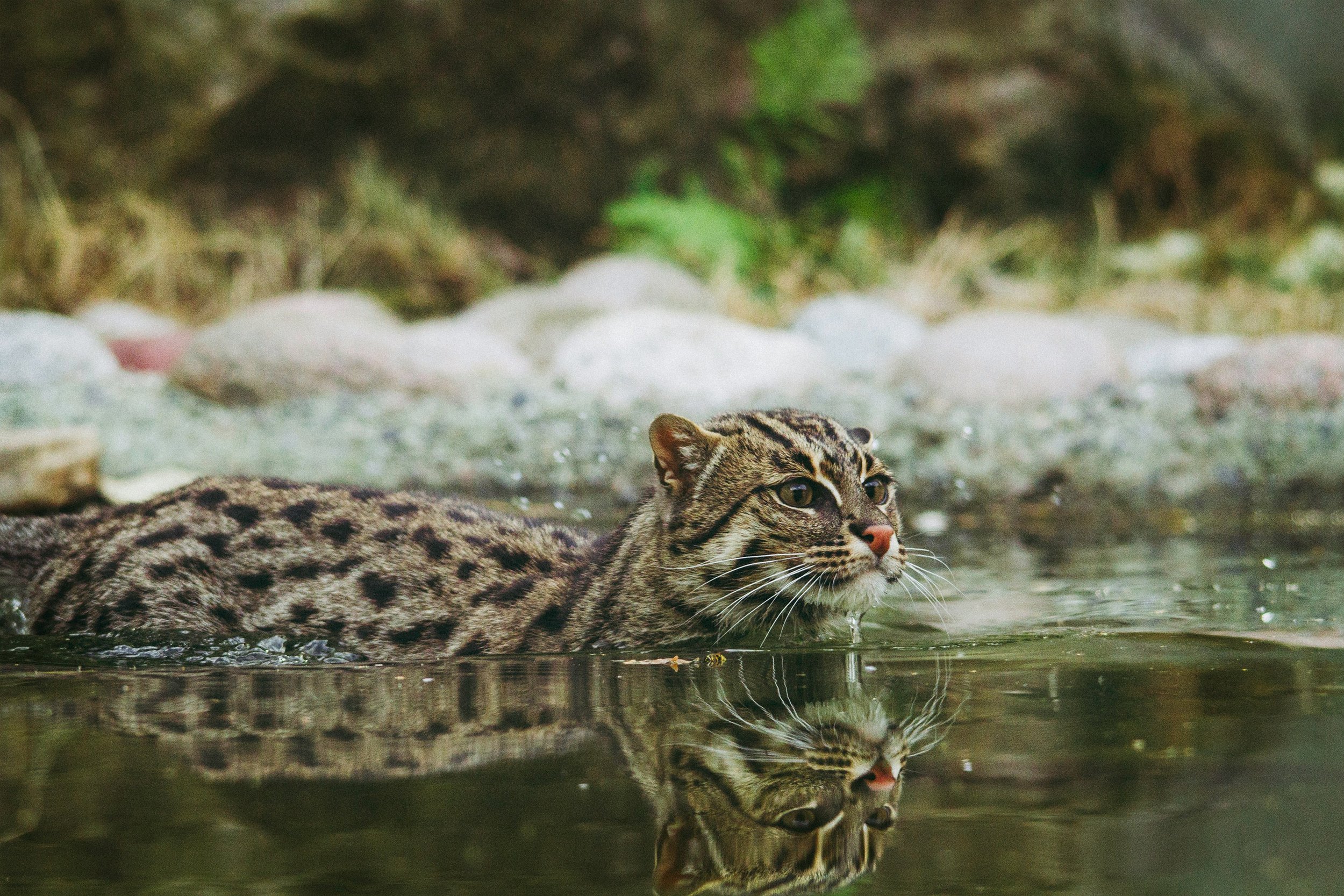
Fishing Cat: The Water-Loving Feline
Unlike most felines, the Fishing Cat is a skilled swimmer that thrives in wetland habitats. With webbed feet, a muscular body, and a love for water, this unique wild cat is perfectly adapted to its aquatic lifestyle. Often spotted prowling the edges of rivers, mangroves, and swamps, it hunts fish, crustaceans, and amphibians with remarkable precision. However, despite its impressive abilities, the Fishing Cat is facing increasing threats that are putting its survival at risk.
Where Do Fishing Cats Live?
Fishing Cats are primarily found in South and Southeast Asia, inhabiting wetlands, marshes, mangroves, and riverbanks in India, Nepal, Sri Lanka, Bangladesh, Thailand, Cambodia, and Indonesia. They depend on healthy, water-rich environments, making them an important indicator of wetland health.
Threats Facing the Fishing cat
-
One of the biggest threats to Fishing Cats is the destruction of wetlands for agriculture, shrimp farming, and urban expansion. As these vital habitats disappear, so does the Fishing Cat.
-
In some regions, Fishing Cats are killed by farmers who see them as a threat to livestock and fishing ponds. Retaliation killings have contributed to declining populations.
-
Although not as commonly targeted as other wild cats, Fishing Cats are sometimes hunted for their fur or captured for the illegal pet trade.
-
Industrial waste, plastic pollution, and agricultural runoff poison the waters that Fishing Cats depend on, reducing fish populations and impacting their survival.
Conservation Efforts and How People Are Helping
Protected Wetlands & Reserves: Some regions, such as parts of India and Sri Lanka, have created protected areas to safeguard Fishing Cats and their wetland homes.
Research & Monitoring: Conservationists are tracking Fishing Cat populations through camera traps and field studies to better understand their numbers and behavior.
Community-Based Conservation: Local communities are being educated about the importance of wetlands and are encouraged to take part in conservation efforts rather than harming these cats.

The Fishing Cat plays a vital role in maintaining the balance of wetland ecosystems, but its survival depends on the health of these fragile environments. By protecting wetlands, reducing pollution, and supporting conservation efforts, we can ensure that this extraordinary water-loving cat continues to thrive in the wild.

Next is

